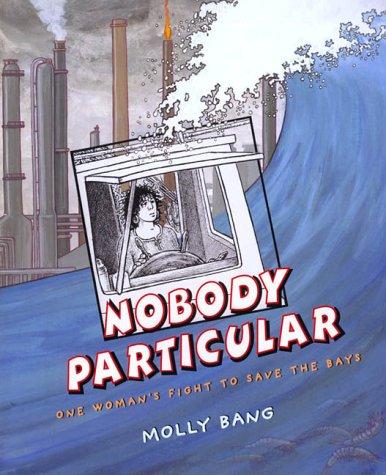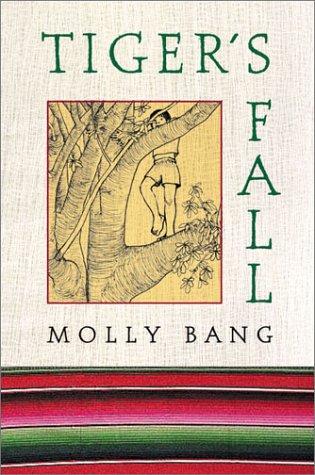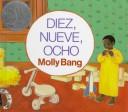Bang, Molly
14 Reviews
(2)
PS
With Ann Stern. While working on a tangram puzzle, Sophie (most recently from When Sophie's Feelings Are Really, Really Hurt) believes it when her big sister says she's not smart ("I can't do ANYTHING!"). Happily, her teacher helps Sophie and her classmates learn to persist in solving (math) problems. Bang presents the compelling emotional arc of a realistic child; her vibrant colors feature racially diverse and variously abled students.
Reviewer: Susan Dove Lempke
| Horn Book Magazine Issue:
January, 2018
(1)
K-3
Illustrated by
Molly Bang.
Bang and Chisholm bring their energy-centered perspective on Earth systems to the water cycle. The sun serves as narrator, showing how its energy interacts with water and supports life. The science is superb, and Bang's illustrations are thoughtfully conceived representations of chemistry and physics. The sun emphasizes the need for conservation and management of water resources. The book closes with extensive, strongly scientific notes.
Reviewer: Danielle J. Ford
| Horn Book Magazine Issue:
March, 2017
(2)
PS
Sophie from Bang's now-classic When Sophie Gets Angry...Really, Really Angry is back in a book about hurt feelings--and about how art functions. When a classmate ridicules her painting because the colors are "wrong," Sophie is hurt and embarrassed. Their teacher helps the class understand how her painting works. Bang's illustrations take readers step-by-step through the artistic process, constantly conveying emotion.
Reviewer: Martha V. Parravano
| Horn Book Magazine Issue:
September, 2015
(1)
K-3
Illustrated by
Molly Bang.
Bang and Chisholm explain the production and consumption of fossil fuels, along with the consequences of all that energy use: climate change. The sun serves as narrator describing the relationship between photosynthesis (plants) and respiration (animals) and energy; a slight imbalance produces fossil fuels. Bang's illustrations brilliantly represent the chemistry: bright yellow dots of energy against a deep-blue background hover over their producers.
Reviewer: Danielle J. Ford
| Horn Book Magazine Issue:
September, 2014
(2)
K-3
This fresh perspective on food chains focuses on the critical and voluminous ocean-based plant life--plankton--and the transfer of energy and nutrients from the sun to these microscopic plants to ocean animals and back. Glowing illustrations, age-appropriate explanations, well-chosen text and visual analogies, and a series of rhetorical questions are used to excellent effect. Six pages of notes are appended.
Reviewer: Danielle J. Ford
| Horn Book Magazine Issue:
May, 2012
(3)
PS
A child praises different body parts, rejoicing in everything they do ("Thank you, feet, for holding me up"). This gratitude extends even further: "I am part of this whole world--this universe...I am ALIVE"). Though the narrative voice is a tad mature, it's not overly preachy. Back endpapers describe how Bang created the striking collage illustrations from paper bags and other materials.
Reviewer: Martha Sibert
(2)
K-3
Illustrated by
Molly Bang.
This account of photosynthesis is narrated by the sun. Shining on every page, it celebrates its power with bursts of bright yellow connecting with the greens of Earth. Circular paintings emphasize the continuity of nature, while the spare, poetic narrative describes the process of converting energy and carbon dioxide into sugar. Back matter gives further information about the scientific process of photosynthesis.
Reviewer: Betty Carter
| Horn Book Magazine Issue:
May, 2009
(2)
K-3
In a simple text, Bang tells the story of sunlight to lamplight (how energy from the sun turns into energy for electricity) from the point of view of the sun. Her paintings connect the light of the cosmos with light here on earth, and the graphic narrative details are dramatically satisfying as well as beautiful. An afterword further elucidates the concepts.
Reviewer: Ruth Ketchum
| Horn Book Magazine Issue:
May, 2004
(2)
K-3
A 1984 Boston Globe-Horn Book honor book, Bang's modern adaptation of the Japanese folktale "The Crane Wife" is illustrated with hauntingly beautiful, realistic artwork that does full justice to the tale. Originally done in calligraphy, the text in this reissue is in a large, clear type that, while less elegant, is certainly easier to read.
Reviewer: The Horn Book, Inc.
| Horn Book Magazine Issue:
October, 1983
(2)
4-6
In this complex and visually stunning picture book, Bang tells the story of activist Diane Wilson, a commercial shrimper who almost single-handedly forced Formosa Plastics to agree to stop polluting the Texas bays. The book is sometimes overloaded with information as well as rhetoric, but collages of newspaper accounts, governmental reports, and photos provide a strong context for the events.
Reviewer: Betty Carter
| Horn Book Magazine Issue:
January, 2001
(4)
4-6
This brief novel tells of a girl, Lupe, who becomes paralyzed after an accident and goes to live in a center for people with disabilities. Set in Mexico, the story tackles a fascinating topic but is a little sketchy in its description of characters and settings. Bang's illustrations add appeal, and an afterword discusses the actual center on which the story is based.
Reviewer: Lauren Aimonette LIang
(1)
4-6
Using the familiar story of "Little Red Riding Hood" as a touchstone, Bang translates characters and situations into abstract shapes, exploring the range of emotions that can be elicited by the interplay of shapes, sizes, and colors on a page. Now available in hardcover, the book has been redesigned, enlarged, and features a new preface.
Reviewer: The Horn Book, Inc.
| Horn Book Magazine Issue:
July, 1992
(3)
PS
The rage a girl experiences when her sister takes her toy away is made manifest by Bang's shrewd use of intense color, onomatopoeia, and illustrative metaphor that depicts Sophie as "a volcano, ready to explode." Readers can feel the mood shift when Sophie runs outside and climbs a tree to comfort herself, and the fiery, angry colors change to soothing greens and blues.
Reviewer: Christine M. Heppermann
(3)
PS
A welcome edition, this Spanish translation of the Caldecott Honor Book 'Ten, Nine, Eight' retains the gentle rhythm and quiet tone of the original, in which a father counts down objects in his young daughter's bedroom in a soothing lullaby.
Reviewer: The Horn Book, Inc.
14 reviews
We are currently offering this content for free. Sign up now to activate your personal profile, where you can save articles for future viewing.


















